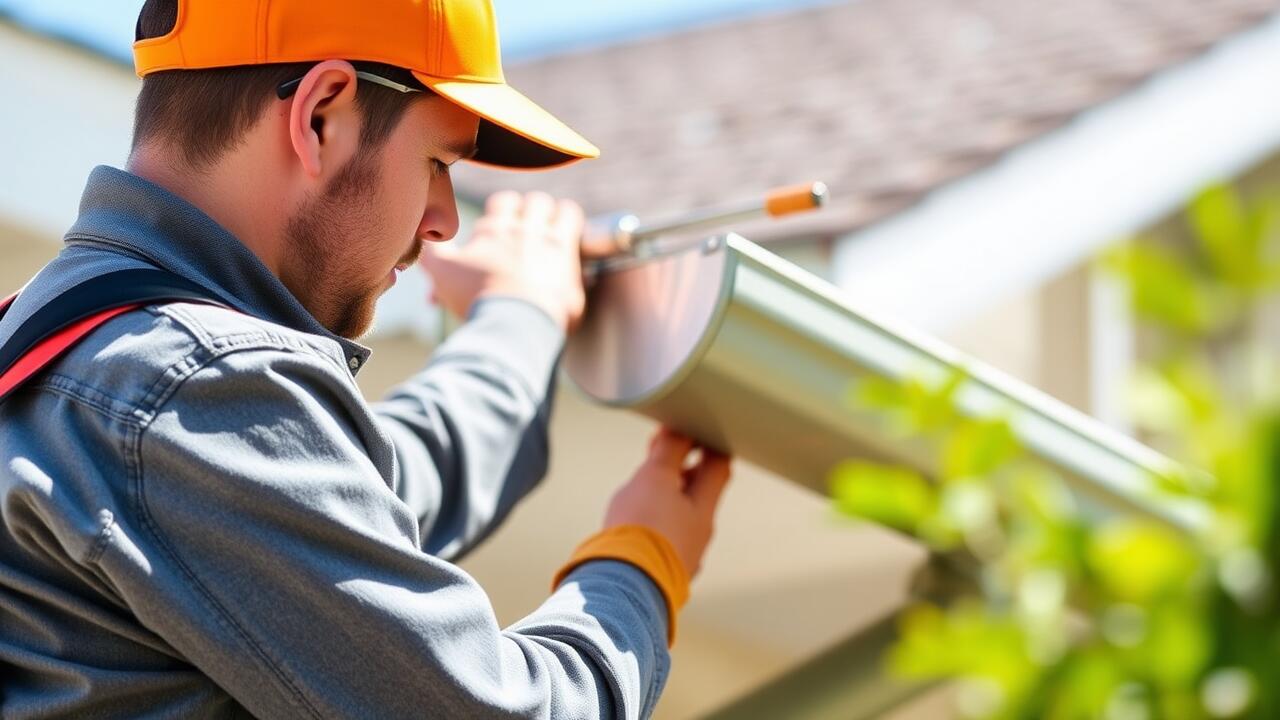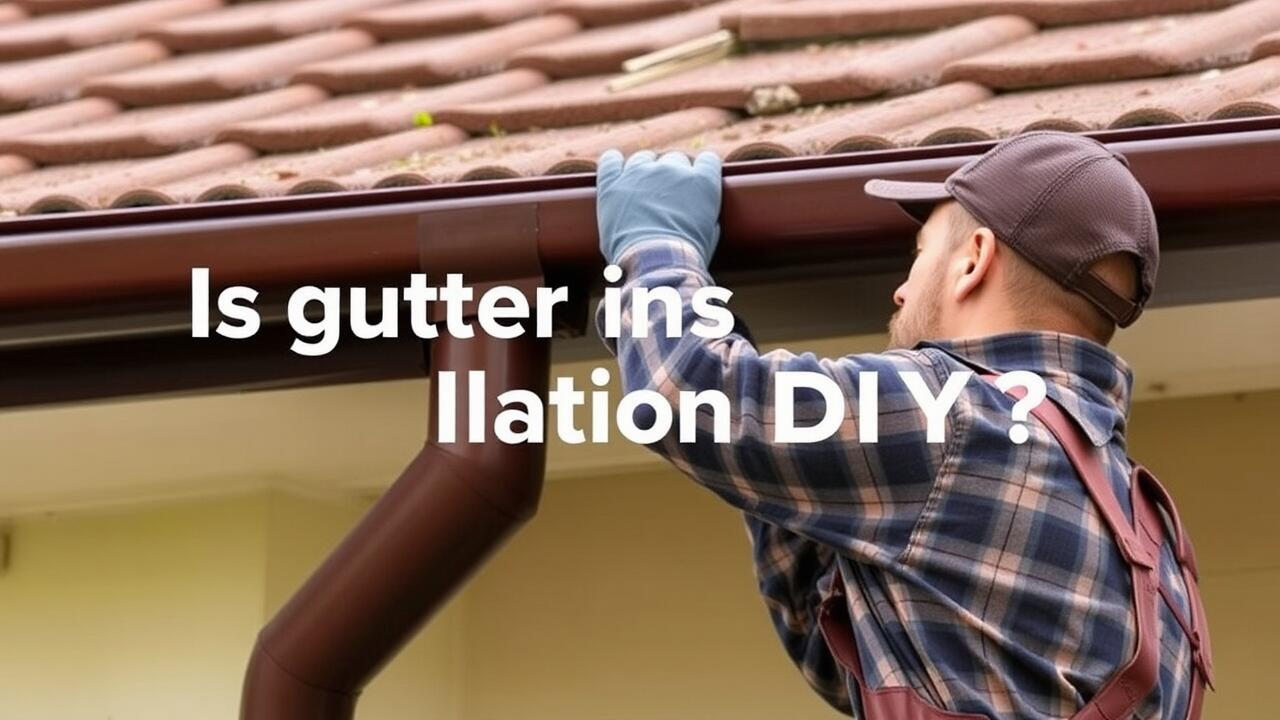
Signs of Gutter Issues
Noticing signs of gutter issues early can save homeowners from costly repairs. One common indication is water spilling over the edges during heavy rain, suggesting that the gutters are clogged or improperly pitched. Additionally, if there are stains or streaks on the siding, it may indicate that water is not being directed away from the home effectively. These visible signs can help homeowners gauge the condition of their gutters.
Another critical sign is the presence of rust or corrosion on metal gutters. This deterioration can compromise their functionality and lifespan. Cracks or holes in the gutter system can also lead to leaks, further risking water damage to the foundation. When these issues arise, utilizing a search term like "Gutter Installation near me" can help find local professionals to assess and remedy the situation promptly.
Recognizing Problems Before They Escalate
Regular inspection of gutters is crucial to identify potential problems early. Homeowners should be aware of common signs such as water pooling around the foundation, sagging gutters, or rust and corrosion. These indicators suggest that the gutters may not be functioning as intended. Observing any of these issues can help prevent more significant damage to the home’s structure and landscape.
When looking for solutions like "Gutter Installation near me," it’s important to select a reputable contractor who can address any observed problems effectively. They can help assess current gutter conditions and recommend appropriate installations or repairs. Timely action can save both time and money, ensuring that the home remains protected from the elements.
Installing Gutters
When considering gutter installation, it's vital to assess the specific needs of your home. The type of gutter system, materials, and preferences for aesthetics will play a significant role in the decision-making process. Proper planning ensures the installation complements the structure while maximizing functionality. The local climate and average rainfall should also influence the selection of gutter sizes and styles to prevent water damage.
Homeowners often search for "Gutter Installation near me" to find professionals who can provide quality workmanship. This local approach not only supports community businesses but also ensures that installers are familiar with regional weather conditions and regulations. Engaging with local experts can lead to an informed installation that enhances your home’s durability, preventing costly repairs down the road.
Factors Affecting Gutter Placement
When considering gutter placement, the slope of the roof plays a crucial role. A proper slope ensures efficient water runoff and prevents standing water, which can lead to structural damage over time. Roof design, including features like hips and valleys, may also influence where gutters should be installed. It's essential to account for these architectural elements to optimize the performance of the gutter system.
Another key factor is the surrounding landscape and potential obstructions. Large trees nearby can cause debris buildup, necessitating the placement of additional gutters or debris guards. Additionally, local climate can determine ideal gutter placement; regions with heavy rainfall might require a greater number of downspouts for effective drainage. When searching for "Gutter Installation near me," it's important to consult with professionals who understand these local considerations for optimal installation.
Downspout Placement Guidelines
Proper downspout placement is crucial for effective water management. Positioning downspouts at appropriate intervals along the gutter system helps ensure that water flows efficiently away from the roof and foundation. Ideally, downspouts should be located in areas where they can direct water runoff into designated drainage pathways or rainwater collection systems. This minimizes the risk of water pooling near the home, which can lead to structural damage over time.
When considering downspout placement, it is also essential to assess the landscape around the property. Avoid placing downspouts in areas where water is likely to accumulate, such as low spots or near flower beds that may suffer from excessive moisture. If you're unsure about how to achieve optimal placement, searching for "Gutter Installation near me" can connect you with local professionals who can provide guidance and help ensure your system works effectively.
Ensuring Efficient Water Flow
Proper downspout placement is essential for effective water flow management. Downspouts should be strategically positioned to direct rainwater away from the foundation of the house. When planning the layout, consider the slope of the land and any existing landscape features. This ensures the water doesn’t pool around the foundation, which can lead to more significant structural issues over time.
When looking for professional assistance, searching for “Gutter Installation near me” can provide local options. Local installers are familiar with regional weather patterns and soil conditions, allowing for optimal gutter design. They can recommend the right number and placement of downspouts based on your specific home and environment, maximizing the effectiveness of your gutter system.
FAQS
What is the general rule of thumb for gutter installation?
The general rule of thumb for gutter installation is to ensure that they are pitched at a slight angle, typically 1/4 inch for every 10 feet of gutter run, to allow for proper water flow towards the downspouts.
How often should I inspect my gutters for issues?
It’s recommended to inspect your gutters at least twice a year, in the spring and fall, to check for debris buildup, leaks, or other signs of damage.
What are common signs that my gutters need to be repaired?
Common signs of gutter issues include water stains on your home’s exterior, overflowing gutters, sagging gutters, or water pooling around your foundation.
How do I determine the right size gutter for my home?
The right size gutter depends on your roof’s size and slope, as well as your local rainfall averages. Typically, a 5-inch gutter is sufficient for most residential homes, while larger roofs may require 6-inch gutters.
What is the best placement for downspouts?
Downspouts should be placed at least every 30 feet along the gutter system and positioned away from the foundation to ensure efficient water flow and prevent water damage.



